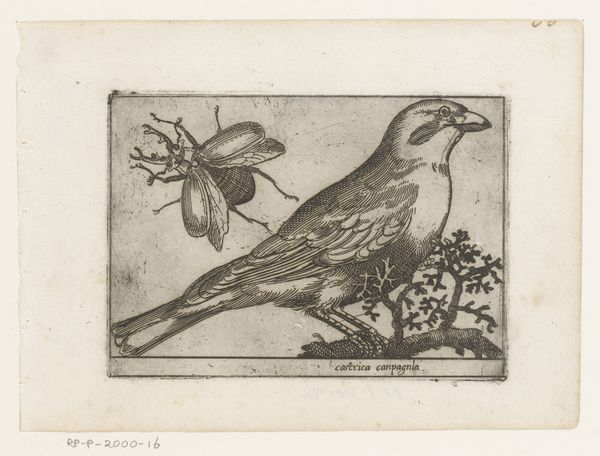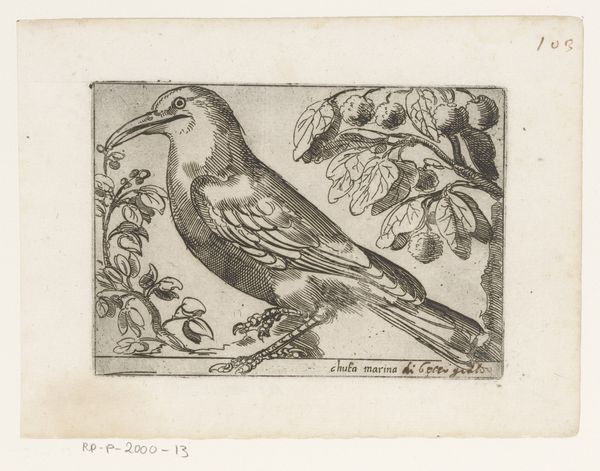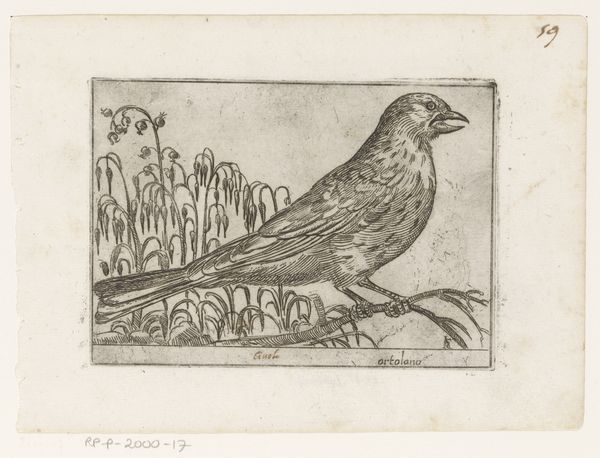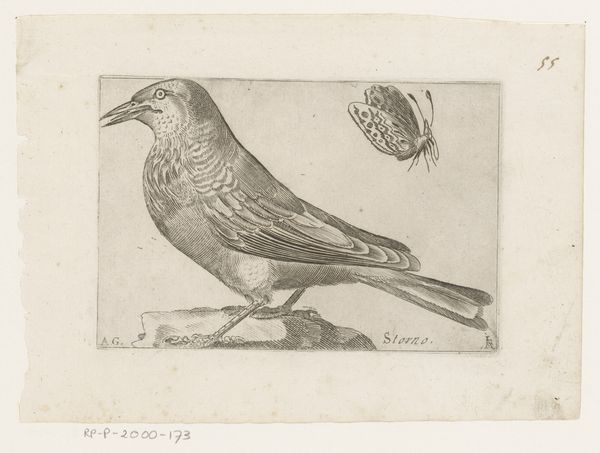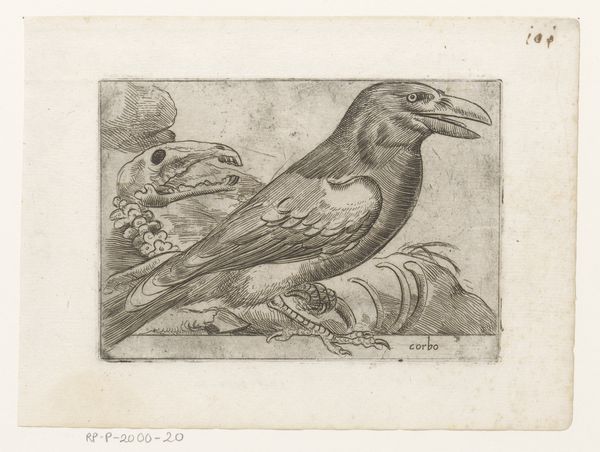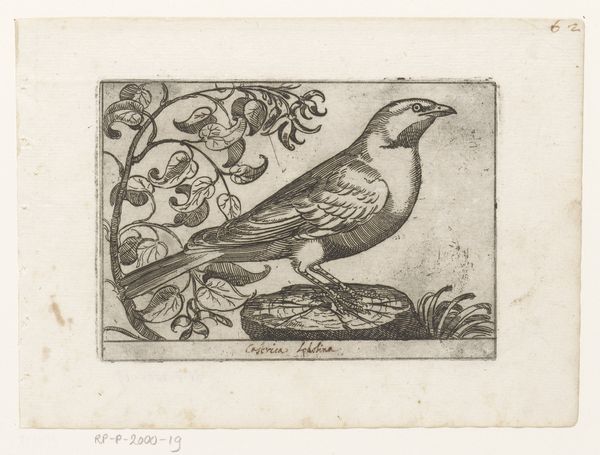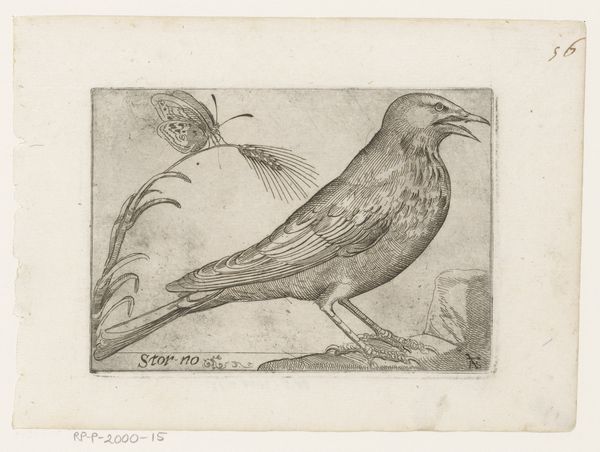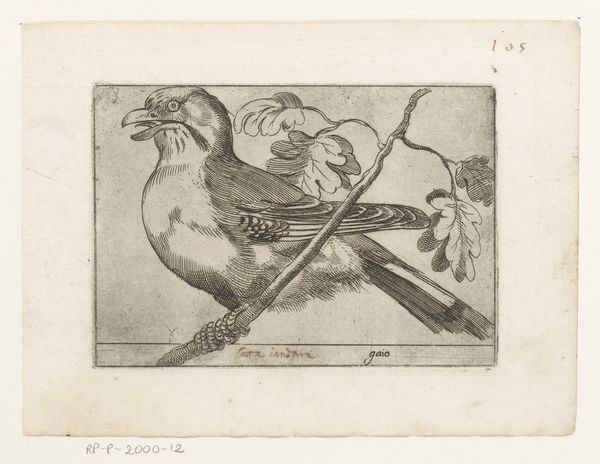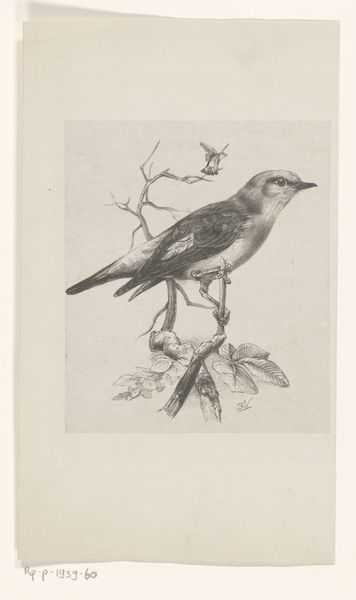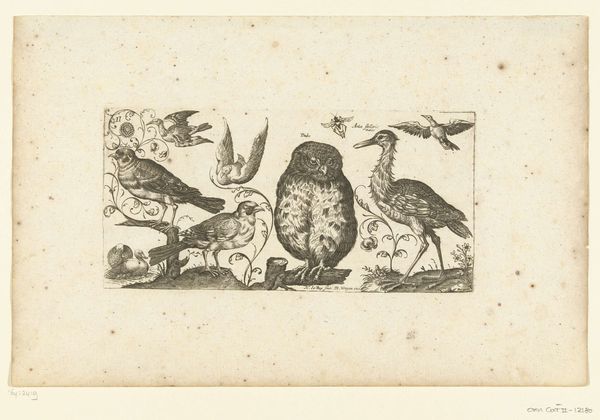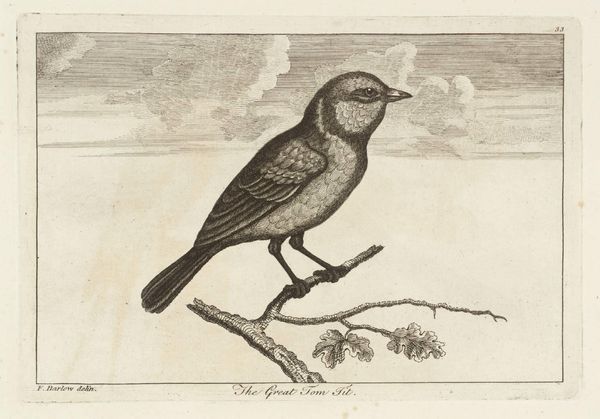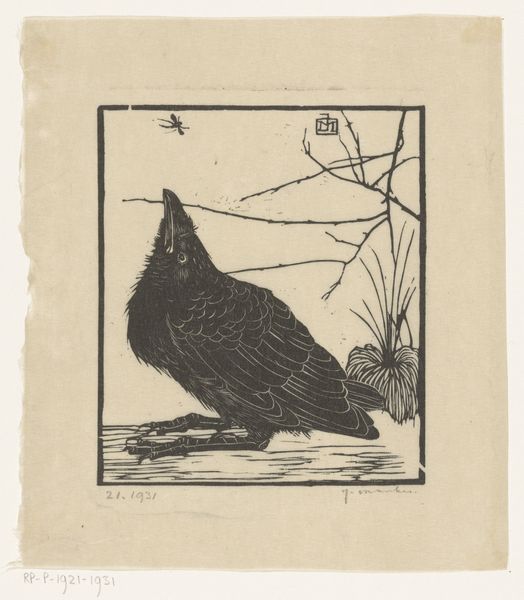
print, etching, engraving
#
portrait
#
animal
# print
#
etching
#
old engraving style
#
11_renaissance
#
pen-ink sketch
#
sketchbook drawing
#
northern-renaissance
#
engraving
Dimensions: height 92 mm, width 137 mm
Copyright: Rijks Museum: Open Domain
Curator: Immediately I am struck by the delicacy and stillness of this small scene. The bird appears both precious and vulnerable. Editor: Indeed. We are looking at a print entitled "Ortolaan (Emberiza hortulana)," etched and engraved by Jacques de Fornazeris around 1580-1590. It's currently held at the Rijksmuseum. Fornazeris masterfully uses line work to create this study of a bird and its environment. Curator: It feels almost scientific in its observation, but there is something so poetic about its rendering. The way the bird’s feathers are suggested by the lightest of touches, alongside the meticulously drawn insects—it gives the whole image a sort of precious weight. Are those moths beside the bird? Editor: Yes, two of them, carefully placed next to the Oat stalks. This was created during the Northern Renaissance, a time of renewed interest in naturalism and detailed observation. Prints like this were not simply decorative; they were often part of larger scientific studies or served to document the natural world. This kind of approach was circulating among scientists, aristocrats and curious bourgeois. Curator: The Ortolaan itself—such a tiny, plump bird! Known for its tragic fate, consumed whole as a delicacy despite an EU ban in 2007! Is it the fate of such beautiful, small things to be destroyed and devoured? It’s not the sole victim, though; in antiquity, the Ancient Greeks thought of Butterflies as Psychai – souls escaping bodies at the point of death. A similar approach to death for different animals… how curious. Editor: You are quite right, the historical context adds a layer of bitter irony when one is reminded that it remains an emblem of both gastronomic excess and environmental recklessness. Consider how many natural history publications at the time contained depictions of threatened species. The tension between aesthetic admiration and looming ecological collapse is not exactly new. Curator: So true. To see this level of detail—the almost forensic interest in texture and form –applied to creatures already on the precipice…It's a haunting image, however softly rendered. Editor: Well, thinking about the context has certainly amplified my viewing. It feels like looking at a delicate balance sheet between art, nature, and humanity’s consuming appetites.
Comments
No comments
Be the first to comment and join the conversation on the ultimate creative platform.
